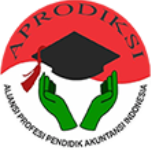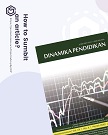Employee Performance through Learning & Innovation in Mediating Organizational Structure and Knowledge Oriented Leadership
(1) Universitas Putra Indonesia YPTK Padang
(2) Universitas Putra Indonesia YPTK Padang
(3) Universitas Putra Indonesia YPTK Padang
Abstract
Keywords
Full Text:
PDFReferences
Alavi, M., & Leidner, D. E. (2001). Knowledge management and knowledge management systems: Conceptual foundations and research issues. MIS Quarterly, 107–136.
Almatrooshi, M. J. A. A., Khalifa, G. S. A., Ameen, A., Hossain, M. D. S., & Morsy, M. A. (2020). The role of knowledge oriented leadership and knowledge sharing to manage the performance of Ministry of Interior in UAE. International Journal on Recent Trends in Business and Tourism (IJRTBT), 4(2), 9–17.
Anshori, Y. (2010). Manajemen Strategi Hotel (Strategi Meningkatkan Inovasi dan Kinerja). CV. Putra Media Nusantara-Cetakan Kedua, Agustus 2010-ISBN: 978-602-8832-49-6.
Bibi, N., & Saeed Akhtar, M. M. (2020). Relationship between Organizational Structure and Job Performance of Teaching Faculty at Higher Education Level. Journal of Research & Reflections in Education (JRRE), 14(1).
Cetinkaya, A. S., & Rashid, M. (2018). The effect of social media on employees’ job performance: The mediating role of organizational structure.
Damanpour, F. (1991). Organizational innovation: A meta-analysis of effects of determinants and moderators. Academy of Management Journal, 34(3), 555–590.
Farhanghi, A. A., Abbaspour, A., & Ghassemi, R. A. (2013). The effect of information technology on organizational structure and firm performance: An analysis of Consultant Engineers Firms (CEF) in Iran. Procedia-Social and Behavioral Sciences, 81, 644–649.
Gharama, A. N. A., Khalifa, G. S. A., & Al-Shibami, A. H. (2020). Measuring the mediating effect of cultural diversity: An investigation of strategic leadership’s role on innovation. International Journal of Psychosocial Rehabilitation, 24(03), 1914–1929.
Ghozali, I., & Latan, H. (2015). Partial Least Square, Konsep Teknik, dan Aplikasi menggunakan program SmartPLS 3.0 untuk Penelitian Empiris. In Badan Penerbit Universitas Diponegoro.
Hao, Q., Kasper, H., & Muehlbacher, J. (2012). How does organizational structure influence performance through learning and innovation in Austria and China. Chinese Management Studies.
Haq, M. Z. U., Gu, M., & Huo, B. (2020). Enhancing supply chain learning and innovation performance through human resource management. Journal of Business & Industrial Marketing.
Hermastho, B. (2021). Kepemimpinan Berorientasi Pengetahuan dalam Peningkatan Kinerja Inovasi melalui Implementasi Manajemen Pengetahuan. Iqtisad: Reconstruction of Justice and Welfare for Indonesia, 8(2), 223–242.
Iansiti, M., & Lakhani, K. R. (2014). Digital ubiquity:: How connections, sensors, and data are revolutionizing business. Harvard Business Review, 92(11), 19.
Kanisius, O. M. (2020). Evaluasi Pelayanan Publik Selama Pandemi. Ombudsman. https://ombudsman.go.id/artikel/r/artikel--evaluasi-pelayanan-publik-selama-pandemi
Kanten, P., Kanten, S., & Gurlek, M. (2015). The effects of organizational structures and learning organization on job embeddedness and individual adaptive performance. Procedia Economics and Finance, 23, 1358–1366.
Kasmir, M. S. D. M. (2016). Cetakan ke-1. PT Raja Grafindo Persada, Jakarta.
Kumar, V., Jabarzadeh, Y., Jeihouni, P., & Garza-Reyes, J. A. (2020). Learning orientation and innovation performance: the mediating role of operations strategy and supply chain integration. Supply Chain Management: An International Journal, 25(4), 457–474. https://doi.org/10.1108/SCM-05-2019-0209
Lasi, H., Fettke, P., Kemper, H.-G., Feld, T., & Hoffmann, M. (2014). Industry 4.0. Business & Information Systems Engineering, 6(4), 239–242.
Latif, K. F., Afzal, O., Saqib, A., Sahibzada, U. F., & Alam, W. (2020). Direct and configurational paths of knowledge-oriented leadership, entrepreneurial orientation, and knowledge management processes to project success. Journal of Intellectual Capital.
Law, C. C. H., & Ngai, E. W. T. (2008). An empirical study of the effects of knowledge sharing and learning behaviors on firm performance. Expert Systems with Applications, 34(4), 2342–2349.
Lee, J., Min, J., & Lee, H. (2016). The effect of organizational structure on open innovation: a quadratic equation. Procedia Computer Science, 91, 492–501.
Mabey, C., Kulich, C., & Lorenzi-Cioldi, F. (2012). Knowledge leadership in global scientific research. The International Journal of Human Resource Management, 23(12), 2450–2467.
Mehmood, K. (2017). Knowledge-oriented leadership and innovation: A mediating role of knowledge creation: A case of software industry. In 2017 4th International Conference on Systems and Informatics, ICSAI 2017 (Vol. 2018, pp. 1647–1651). https://doi.org/10.1109/ICSAI.2017.8248548
Naqshbandi, M. M. (2018). Knowledge-oriented leadership and open innovation: Role of knowledge management capability in France-based multinationals. International Business Review, 27(3), 701–713. https://doi.org/10.1016/j.ibusrev.2017.12.001
Novitasari, D., Hutagalung, D., Amri, L. H. A., Nadeak, M., & Asbari, M. (2021). Kinerja Inovasi Di Era Revolusi Industri 4.0: Analisis Knowledge-Oriented Leadership Dan Kapabilitas Manajemen Pengetahuan. Edukatif: Jurnal Ilmu Pendidikan, 3(4), 1245–1260.
Nurcahyo, S. A., & Wikaningrum, T. (2020). Peran Knowledge Sharing, Learning Organization Dan Kapabilitas Inovasi Individual Terhadap Kinerja Karyawan. Jurnal Ekonomi Dan Bisnis, 21(2), 84–96.
Rehman, U. U. (2020). Nexus of knowledge-oriented leadership, knowledge management, innovation and organizational performance in higher education. Business Process Management Journal, 26(6), 1731–1758. https://doi.org/10.1108/BPMJ-07-2019-0274
Robbins, S. P., & Judge, T. A. (2013). Organizational Behavior, 15th. Shahrivar, 13, 1393.
Sahibzada, U. F. (2021). Knowledge-oriented leadership towards organizational performance: symmetrical and asymmetrical approach. Business Process Management Journal, 27(6), 1720–1746. https://doi.org/10.1108/BPMJ-03-2021-0125
Sari, T. D. R., & Sukmasari, D. (2018). Does Organizational Learning and Innovation Influence Performance? Journal of Behavioural Economics, Finance, Entrepreneurship, Accounting and Transport, 6(1), 22–25.
Sedarmayanti, P. (2017). Pengembangan Sumber Daya Manusia. Bandung: PT Refika Aditama.
Sumarsih, I., Marliyani, T., Hadiyansah, Y., Hernawan, A. H., & Prihantini, P. (2022). Analisis Implementasi Kurikulum Merdeka di Sekolah Penggerak Sekolah Dasar. Jurnal Basicedu, 6(5), 8248–8258.
Sutarno, S., Ilmu, M. S.-Y. G., & 2012, U. (2012). Serba-Serbi Manajemen Bisnis.
Trung, N. V. H., & Khalifa, G. S. A. (2019). Impact of Destination Image Factors on Revisit Intentions of Hotel’s International Tourists in Ba Ria-Vung Tau (Br-Vt) the Mediating Role of Positive Word of Mouth. International Journal on Recent Trends in Business and Tourism (IJRTBT), 3(2), 106–115.
Tugas Pokok dan Fungsi Bagian Organisasi Setda Kota Padang. (2020). Pemerintah Kota Padang. https://organisasi.padang.go.id/tugas-pokok-dan-fungsi-bagian-organisasi-setdako-padang
Waruwu, H., Asbari, M., Purwanto, A., Nugroho, Y. A., Fikri, M. A. A., Fauji, A., Shobihi, A. W. I., Hulu, P., Sudiyono, R. N., & Agistiawati, E. (2020). The role of transformational leadership, organizational learning and structure on innovation capacity: Evidence from Indonesia private schools. EduPsyCouns: Journal of Education, Psychology and Counseling, 2(1), 378–397.
Yang, L.-R., Huang, C.-F., & Hsu, T.-J. (2014). Knowledge leadership to improve project and organizational performance. International Journal of Project Management, 32(1), 40–53.
Refbacks
- There are currently no refbacks.

This work is licensed under a Creative Commons Attribution 4.0 International License.

.png)

.png)





